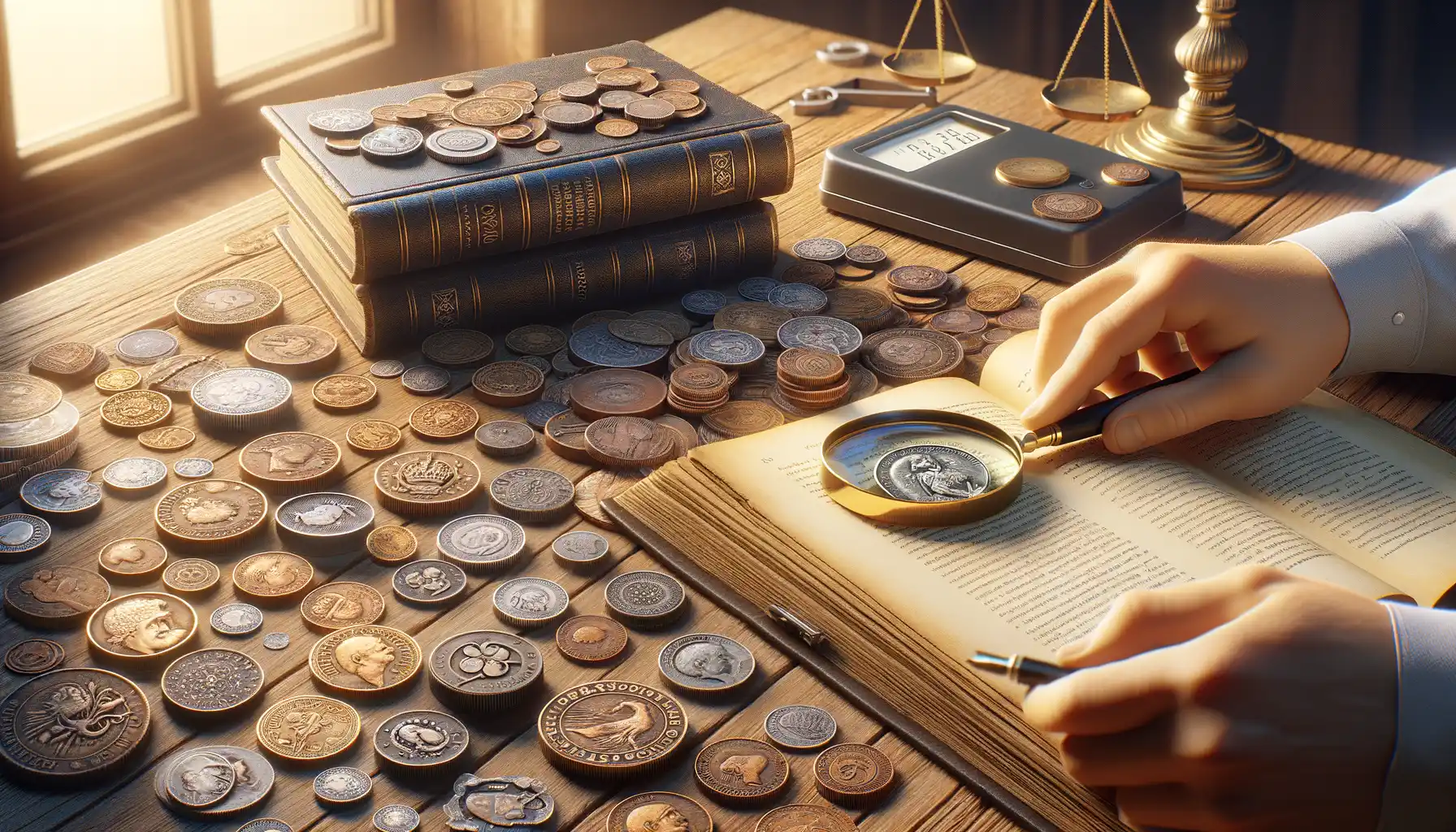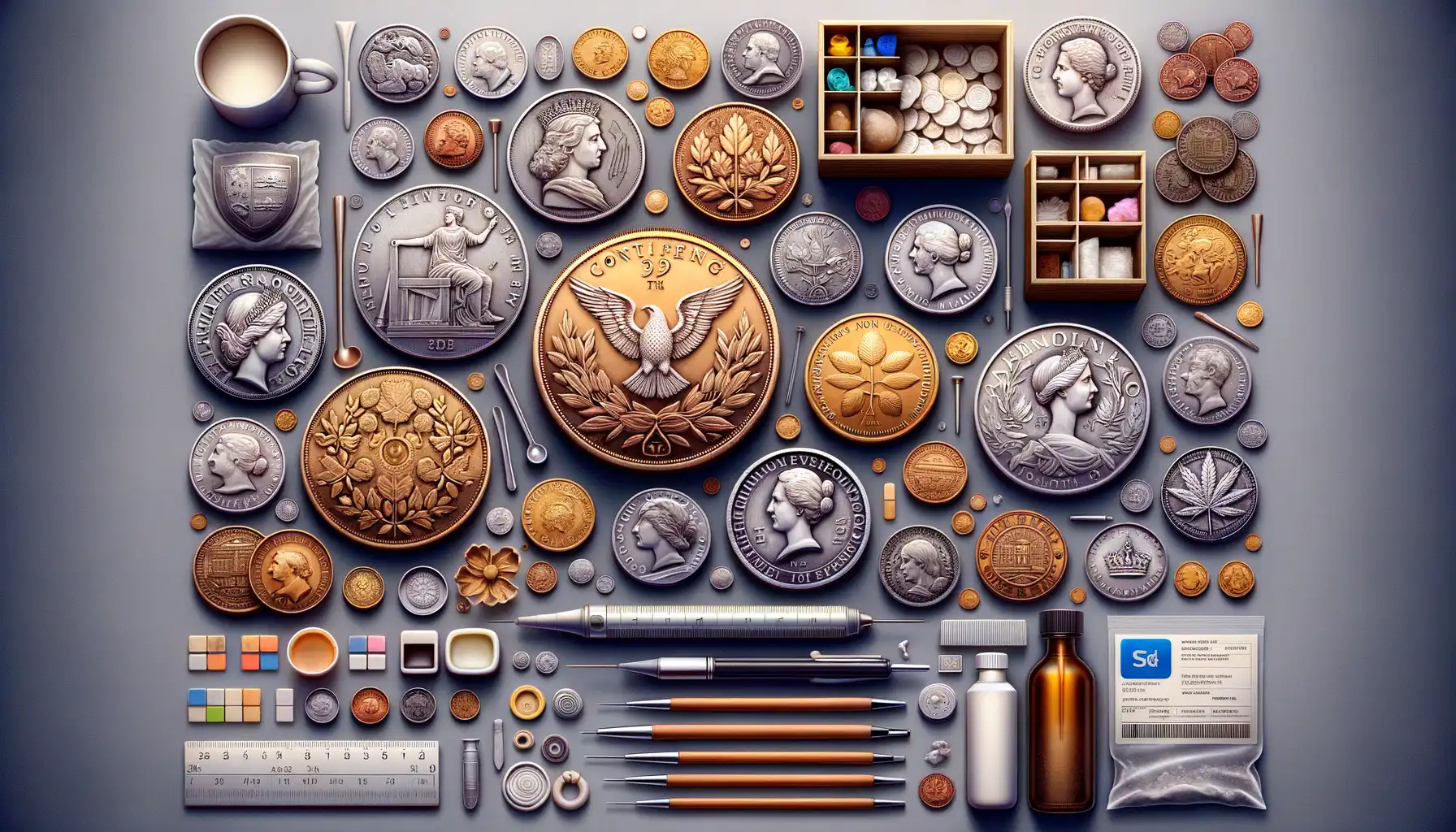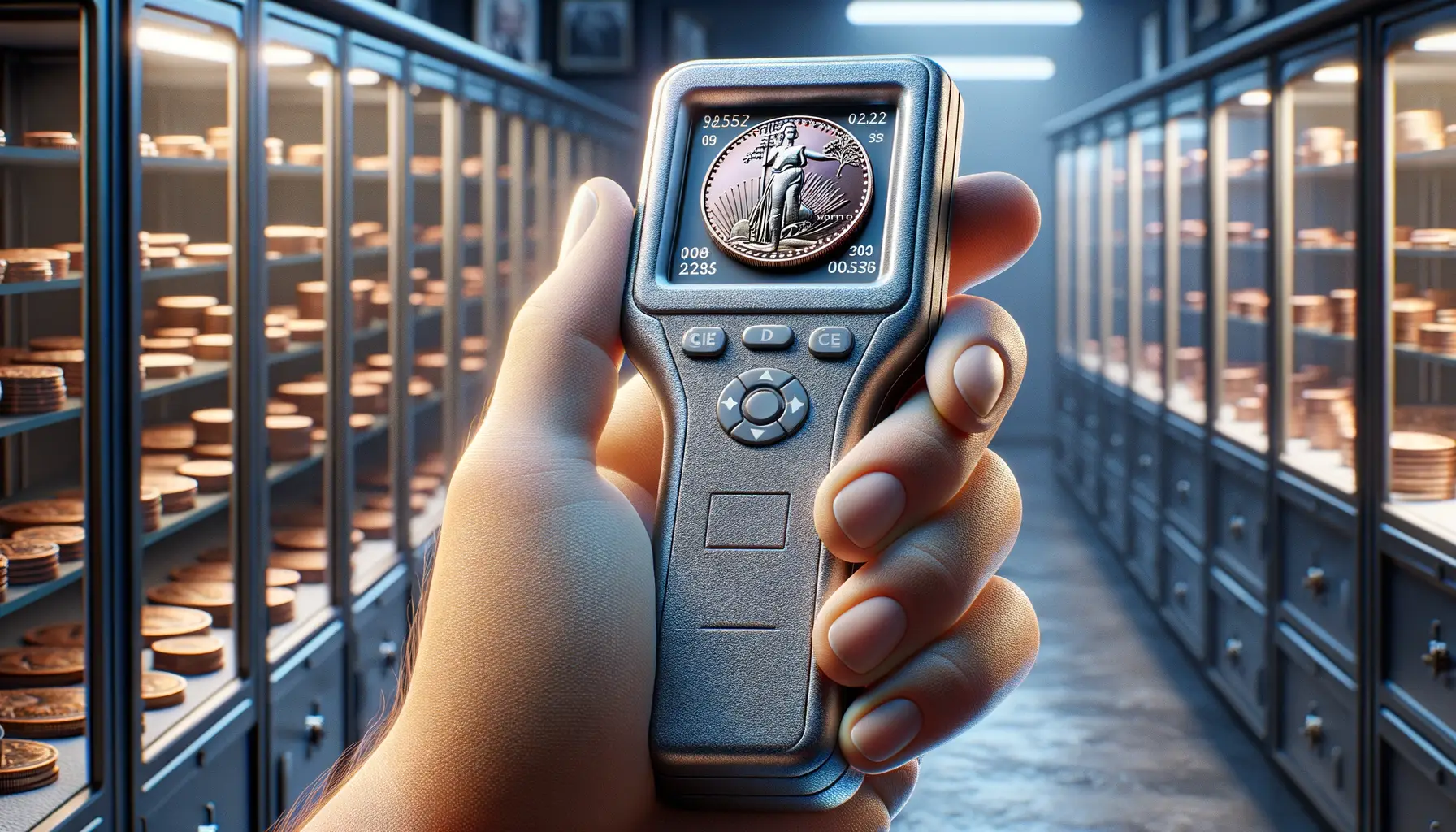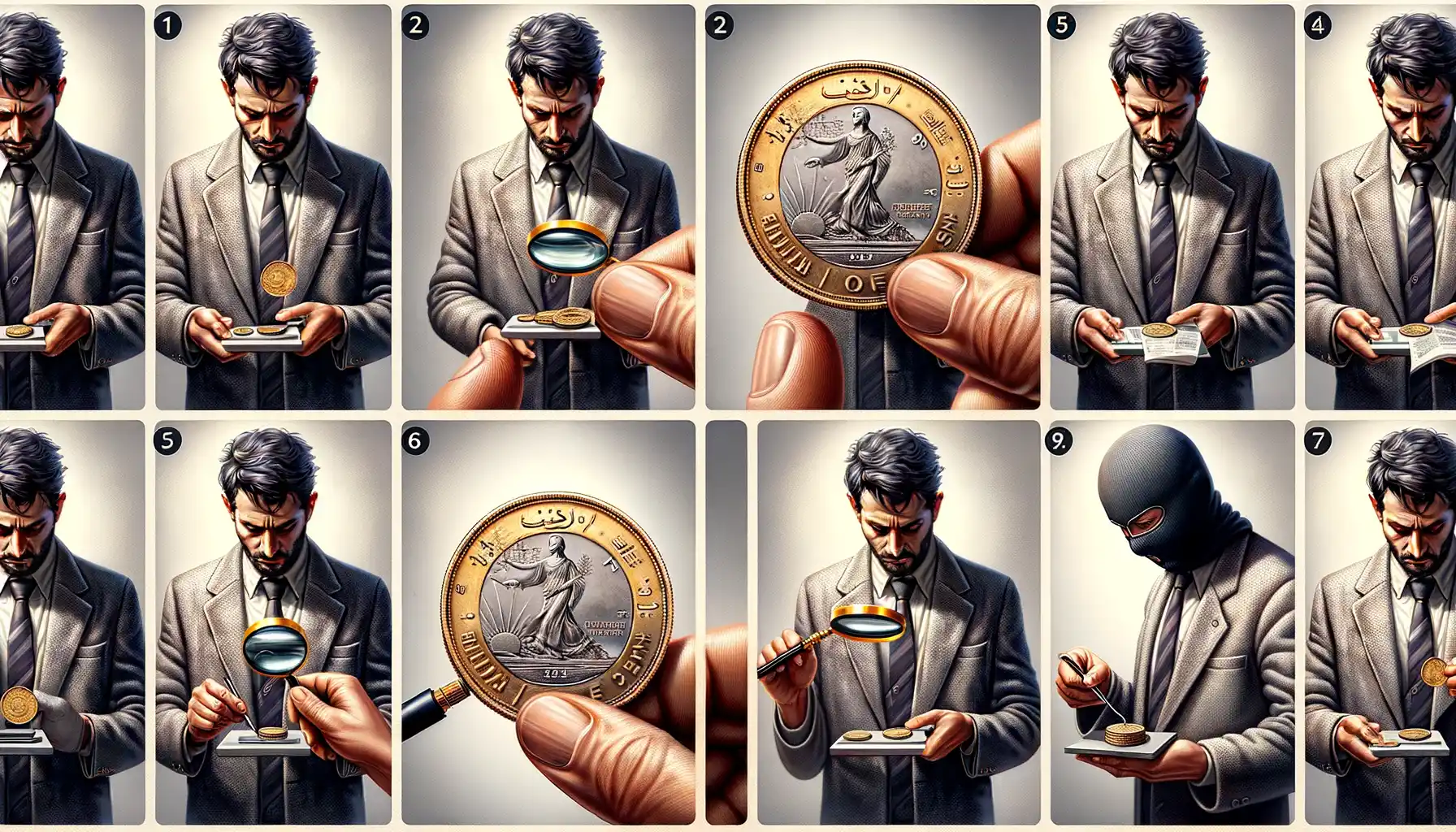Key Signs of Counterfeit Coins
Look Closely: The Devil’s in the Details
If coins could talk, counterfeits would whisper their secrets through their imperfections. Start with the basics—edges. A genuine coin’s rim should be crisp and well-defined, while a fake might have rough or uneven edges, like a rushed painting missing its final brushstrokes.
Then, turn your attention to the artwork. Real coins bear intricate designs—sharp lettering, precise engravings. Counterfeit coins? Think fuzziness. The details may blur like a bad photocopy of something exquisite.
And don’t forget the sound test. Drop a real silver coin on a hard surface, and it sings like a bell. A counterfeit might thud awkwardly, betraying its flawed composition.
- Discoloration: Uneven patches or strange hues might suggest fake metals beneath the surface. Genuine coins rarely look “off.”
- Weight: Fakes often feel light in your hand—like they can’t quite carry the burden of authenticity.
The Coin’s Surface: Telling Stories It Was Never Meant to Share
Have you ever noticed odd pitting or bubbling on a coin’s surface? These imperfections could mean hidden materials lurking beneath, trying to pass themselves off as valuable. Authentic coins, especially those made by national mints, are masterpieces of precision. A counterfeit? It’s the shabby understudy stealing the spotlight.
Tools and Techniques for Coin Authentication

Game-Changing Tools for Coin Authentication
If you’re diving into the world of coin authentication, let me introduce you to your best allies—tools that make spotting a fake feel like solving a thrilling mystery. The good news? You don’t need a lab-level setup. Sometimes, it’s just about having the right gadget in your pocket.
- Magnifying Glass: A collector’s classic! Look closely for details like lettering edges and surface imperfections.
- Digital Calipers: Measure the diameter and thickness of a coin with precision. A fraction off could be your first red flag.
- Rare Earth Magnet: Many counterfeit coins are made from non-precious metals that are magnetic. A quick swipe and… voila, busted!
These tools aren’t just equipment—they’re your secret weapons.
Technique Secrets: See Beyond the Surface
Now let’s talk technique—the magic of combining your tools with a sharp eye. Start by holding the coin under a bright light. Genuine coins often reflect light evenly, while counterfeits give off patchy, uneven glints. And don’t underestimate your ears! Drop the coin on a hard surface; real silver or gold emits a warm “ping,” unlike suspicious, dull thuds.
Every scratch, edge, and sound tells a story. Learn to listen. That’s the art of spotting the imposters hiding in plain sight.
Common Types of Fake Coins and How They Are Made

The Pesky Category of Plated Counterfeits
Plated counterfeits are like wolves in sheep’s clothing. These coins start off as cheap metals—think copper or aluminum—and are then coated with a thin layer of precious metal, such as gold or silver. The goal? To mimic the gleaming luster of authentic coins. While they may initially fool the eye, their imperfections often give them away. The plating can chip or wear over time, revealing their true identity underneath.
Crafting these fakes is surprisingly low-tech: counterfeiters use electroplating or even manual methods like dipping the base coin into molten metal. It’s a quick-and-dirty approach, but for an untrained buyer, it can be enough to pass muster. Pay close attention to uneven finishes or areas where the coating is too thick or missing entirely. These flaws are like breadcrumbs leading you straight to the truth.
Cast Coins: Deceptive Replicas Born in Molded Shadows
Cast coins often feel like the Frankenstein’s monster of counterfeit currency. They’re made by pouring molten metal into molds created from real coins. While the idea sounds crafty, this method often produces glaring clues:
- Soft or blurry details—think of your coin looking like it forgot its glasses.
- A seam along the coin’s edge, which screams “I was made in a mold.”
- Odd weight differences due to impure metals or poor craftsmanship.
Counterfeiters may even sand down these seams, but the texture left behind rarely matches the perfection of a mint-issued coin. And sometimes, if you listen closely while handling cast coins, the sound will even betray them. Unlike the clean, satisfying ring of a genuine coin, cast coins thud dully when dropped—a telltale sign their metal blend is less than stellar. Keep your ears sharp!
Preventing Counterfeit Coin Transactions

Steering Clear of Fake Coin Dealings
Imagine this: you’re carefully inspecting a beautiful coin that could be the crown jewel of your collection. But wait—what if it’s fake? Counterfeit coins can slip into even the most cautious hands, but with the right habits, you can block these fraudsters at the gate.
Here’s your first line of defense: know your source. Whether it’s an online marketplace or a local dealer, trust is everything. Stick to reputable dealers and check certifications. If you’re buying online, be wary of sellers with vague descriptions or oddly low prices—it’s a red flag waving in plain sight.
Second, build a habit of double-checking every coin. When a deal feels too good to resist, approach it with healthy skepticism. Invest in tools like a loupe or a digital scale—they’re inexpensive but vital allies in your war against forgeries.
- Keep detailed records of your purchases: receipts, photos, and certificates.
- Attend coin shows or auctions where authenticity is prioritized.
And remember: handling coins isn’t just a transaction; it’s a story woven through history. Why let it be tainted by something fake? Be vigilant, and that story stays yours forever.
What to Do If You Suspect a Counterfeit Coin

Trust Your Instincts: The First Steps
So, you’re holding a coin that just doesn’t sit right with you. Maybe it feels too light, the design looks clumsy, or something about the shine feels *off*. First things first: don’t panic. Your gut feeling is your ally here! Start by isolating the coin—keep it away from your other coins or collections to avoid any mix-ups. If it’s part of a payment you’ve just received, politely set it aside and let the person know you’ll need to check it further.
Now, take a closer look. Grab a magnifying glass or use your phone camera to zoom into the details. Does the engraving lack sharpness? Do the edges look uneven? If you have known authentic coins of the same type, this is where some side-by-side comparison can do wonders.
Who Can Help You Confirm? Seek Expertise
If doubts linger, bring in the pros. Reach out to a local coin dealer, numismatist, or even a bank that offers authentication services. These experts live and breathe coins—they’ll spot a forgery in ways you might never guess.
Here’s a quick action plan to follow:
- Take detailed photos of the suspicious coin, front and back.
- Research online; forums may help identify known fakes.
- If deemed counterfeit, report it to local authorities or the Secret Service, depending on your region.
Remember, handling this calmly and methodically ensures you stay one step ahead in the counterfeit coin game!